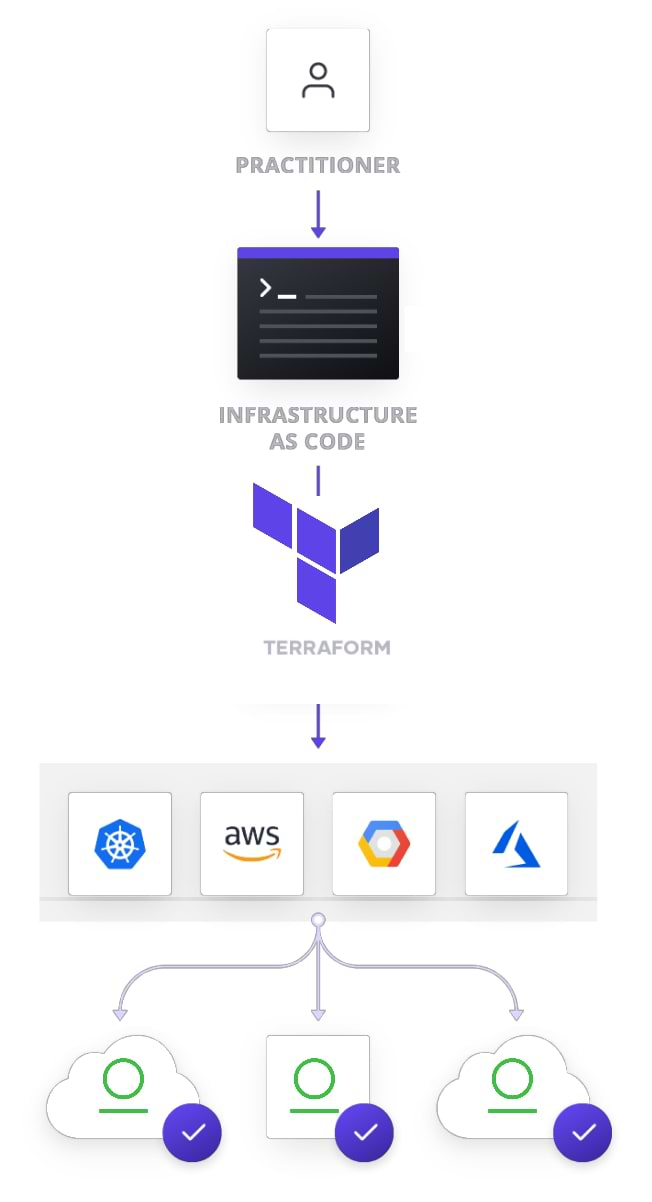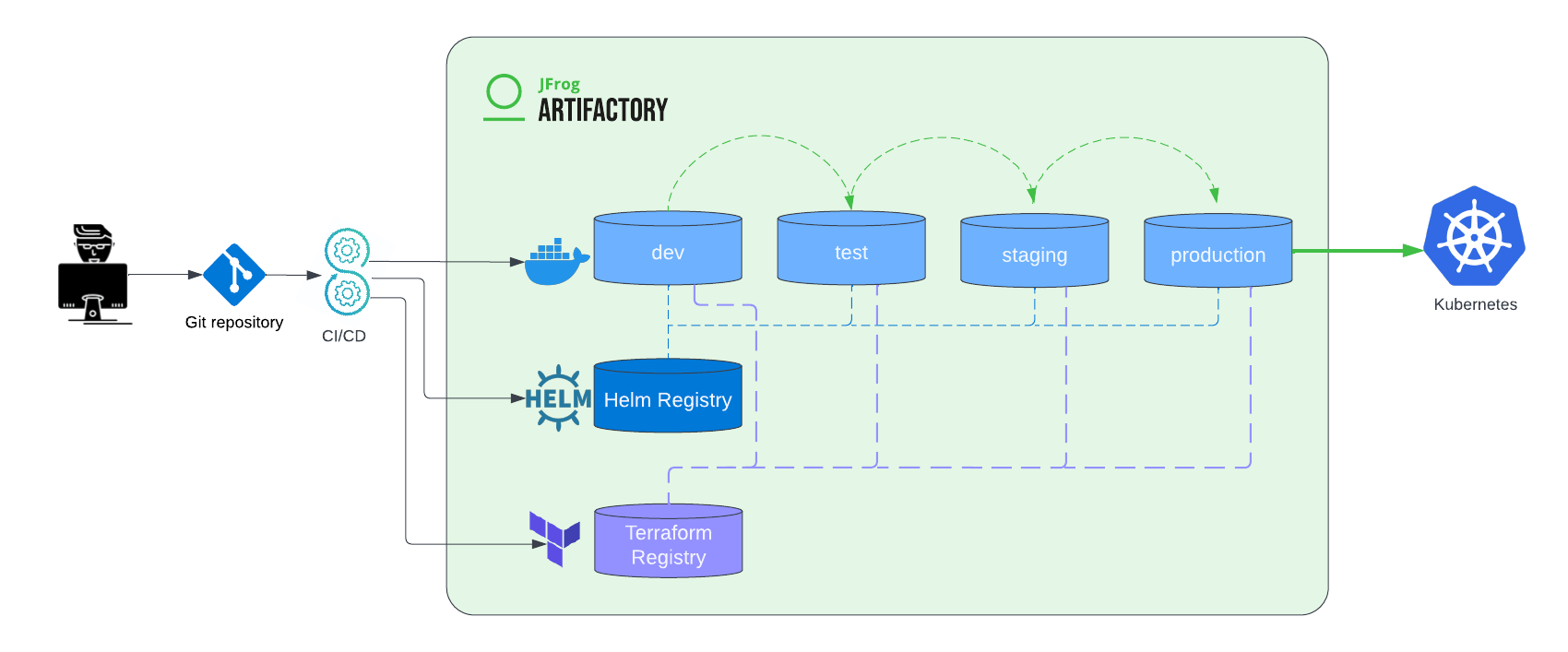helping to deliver secure software updates from code to the edge.
You have been redirected to the JFrog website

に格納して管理することで、ソフトウェアサプライチェーンをより細かく制御できます。これらのIaCファイルをコンテナイメージやHelmチャートと一緒にArtifactoryで管理することで、Artifactoryを包括的な Kubernetesレジストリとして使用することができます。Read Less >


はい、JFrogはコミュニティが使用するために複数のTerraform Providerを維持しています。これとは別に、JFrog Artifactoryを使用してTerraformファイルを管理することもできます。
JFrogツールを使用してTerraformのステートファイルを管理するためのベストプラクティスは次の通りです。
– ステートファイルのセキュアな格納:Terraformのステートファイルを格納するためのセキュアなバックエンドとしてJFrog Artifactoryを使用します。これにより、状態ファイルがバージョン管理され、監査できるようになります。
– 暗号化の有効化:ステートファイルがArtifactoryに格納されるときに、保存時と転送時の両方で暗号化されていることを確認します。
– アクセス制御の実装:JFrogのアクセス許可の管理を使用して、ステートファイルへのアクセスを制限し、許可されたユーザーとサービスのみがステートファイルにアクセスできるようにします。
– リモートステート管理の使用:ArtifactoryのセントラルリポジトリでTerraformのステートファイルをリモートで管理し、チームメンバー間や異なる環境間でのコラボレーションを可能にします。
プロバイダー、モジュール、バックエンドの状態ファイルをJFrog Artifactory経由で保存し、提供することができます。
Terraformは、JFrogツールと統合するクラウドインフラストラクチャ(AWS、Azure、GCPなど)のデプロイを自動化できます。例えば:
– Kubernetesクラスター(Amazon EKSなど)をプロビジョニングし、JFrog Artifactoryからコンテナイメージをプルするように設定する。
– JFrog PipelinesでCI/CDパイプラインを設定し、Terraformによってプロビジョニングされたクラウド環境にデプロイする。
– JFrogツールで使用されるアーティファクトとログのストレージリソースを作成する。
これらのリソースをTerraformで定義することで、環境のレプリケート、リソースのスケーリング、インフラストラクチャのバージョン管理と監査性の確保が容易になります。